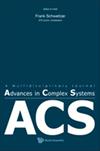基于距离保持交叉的图匹配
IF 1
4区 数学
Q4 MATHEMATICS, INTERDISCIPLINARY APPLICATIONS
引用次数: 0
摘要
图模型是处理结构化现实问题的任何类型的应用程序的基础。任何用图距离度量进行图间比较都需要解决不精确图匹配问题,这是一个难于组合优化的问题。不精确匹配问题包括其公式对任何类型的扰动的鲁棒性,例如,在现实世界环境中固有存在的噪声。在本文中,我们为遗传算法引入了距离保持交叉算子的概念。对于大型图,我们的算法优于任何最先进的近似算法,特别是具有替代交叉算子的遗传算法,据我们所知,这些算法目前限制在不超过50个节点。我们使用两级局部搜索启发式来进一步增强结果,将限制推到300个节点:第一个局部搜索步骤直接集成到交叉算子中;另一种是在子代中独立应用的。本文章由计算机程序翻译,如有差异,请以英文原文为准。
Graph Matching with Distance-Preserving Crossover
Graph models are fundamental to any kind of application on structured real-world problems. Any comparison between graphs by a graph distance measure requires the solution of the inexact graph matching problem, which constitutes a hard combinatorial optimization problem. An inexact matching problem includes in its formulation robustness to any type of perturbation, such as, for instance, noise, inherently present in real-world environments. In this paper, we introduce the concept of distance-preserving crossover operators for genetic algorithms for this task. For large graphs, our algorithm outperforms any state-of-the-art approximate algorithm—in particular, genetic algorithms with alternative crossover operators, which are to the best of our knowledge currently limited to no more than 50 nodes. We use a two-level local search heuristic to further enhance the results, pushing the limits to up to 300 nodes: a first local search step is directly integrated into the crossover operator; another one is applied independently during offspring generation.
求助全文
通过发布文献求助,成功后即可免费获取论文全文。
去求助
来源期刊

Advances in Complex Systems
综合性期刊-数学跨学科应用
CiteScore
1.40
自引率
0.00%
发文量
121
审稿时长
6-12 weeks
期刊介绍:
Advances in Complex Systems aims to provide a unique medium of communication for multidisciplinary approaches, either empirical or theoretical, to the study of complex systems. The latter are seen as systems comprised of multiple interacting components, or agents. Nonlinear feedback processes, stochastic influences, specific conditions for the supply of energy, matter, or information may lead to the emergence of new system qualities on the macroscopic scale that cannot be reduced to the dynamics of the agents. Quantitative approaches to the dynamics of complex systems have to consider a broad range of concepts, from analytical tools, statistical methods and computer simulations to distributed problem solving, learning and adaptation. This is an interdisciplinary enterprise.
 求助内容:
求助内容: 应助结果提醒方式:
应助结果提醒方式:


